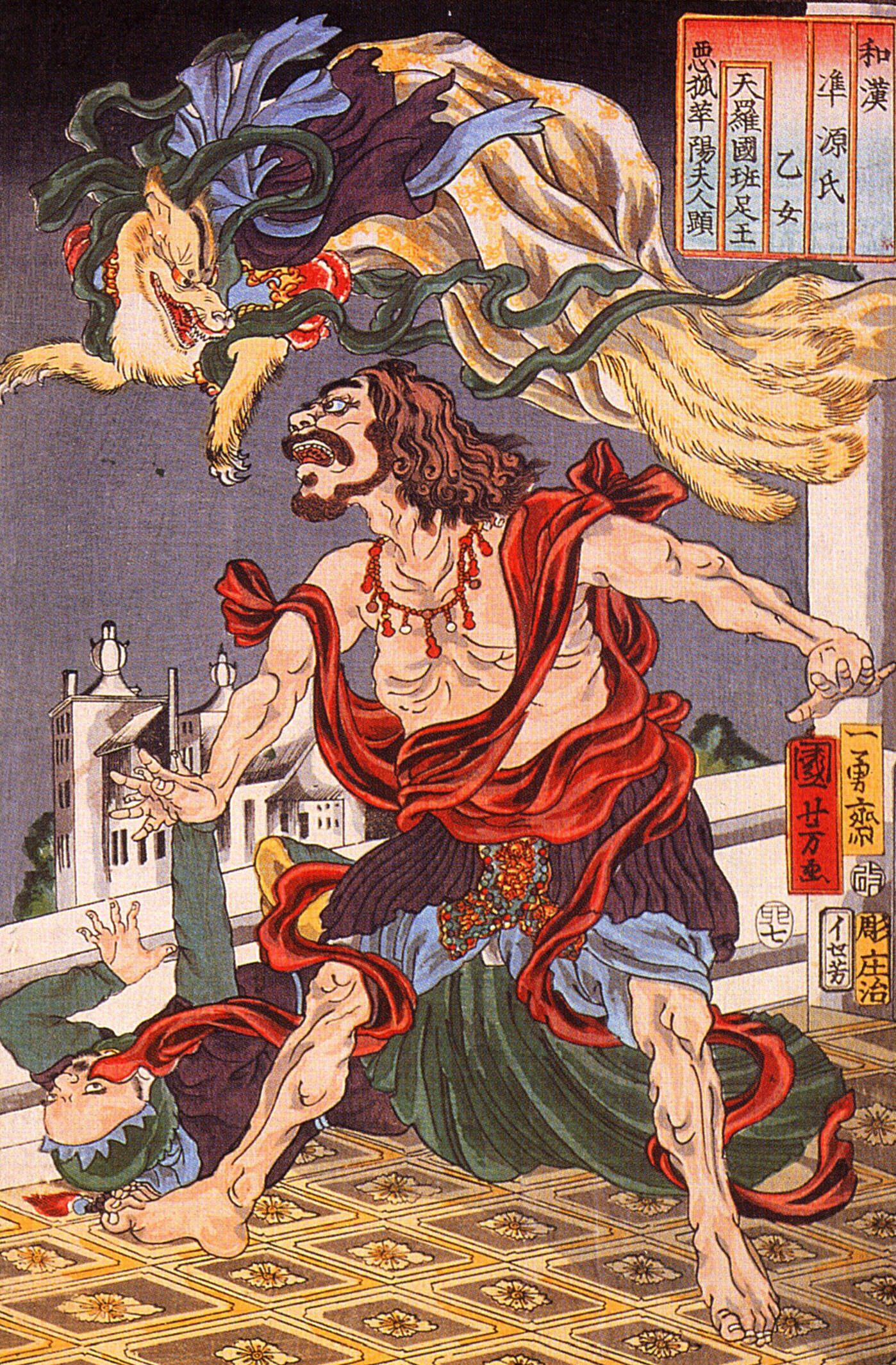One set of myths, which was already touched upon in the art blog, is the fox in Asian culture, particularly Japan, China, and Korea. Kitsune, which translates to fox, are seen as magical creatures, that can change their forms, and are portrayed as tricksters, guardians, evil, and benevolent. They were, and still are, thought to be messengers of the gods, and are treated mostly with respect. The fox god of Japan is Inari, who is also god of entertainers, blacksmiths and rice cultivation. She uses foxes as messengers and can be seen as both benevolent and anger.

By: Utagawa Kuniyoshi

By: Utagawa Kuniyoshi
Native American's have many legends with foxes. Many of the tribes having different stories leads to many different thoughts on the fox. However, a common theme is that they are seen as wise, smart, and tricky, as told in the Iroquois myth The Hungry Fox and the Boastful Suitor. This story is about a man with food who doesn't feed the hungry fox, so the fox tricks him into losing his food by singing.
Sources:
http://www.coyotes.org/kitsune/kitsune.html (Just a list of some myths from multiple cultures)
http://www.ilhawaii.net/~stony/lore26.html
http://www.britannica.com/EBchecked/topic/284487/Inari
http://en.wikipedia.org/wiki/Kitsune
http://www.britannica.com/EBchecked/topic/284487/Inari
http://en.wikipedia.org/wiki/Kitsune




